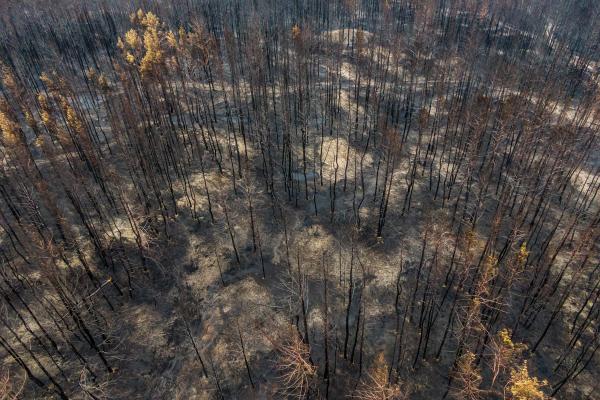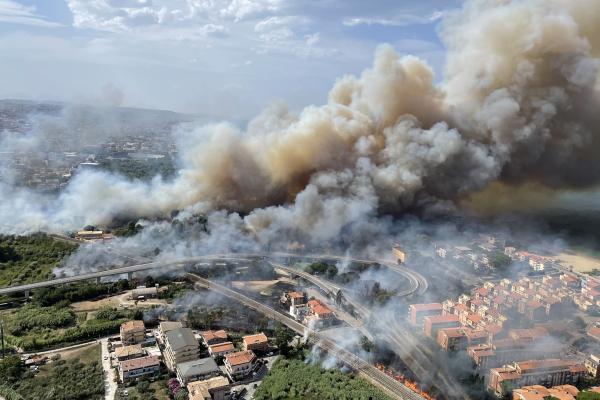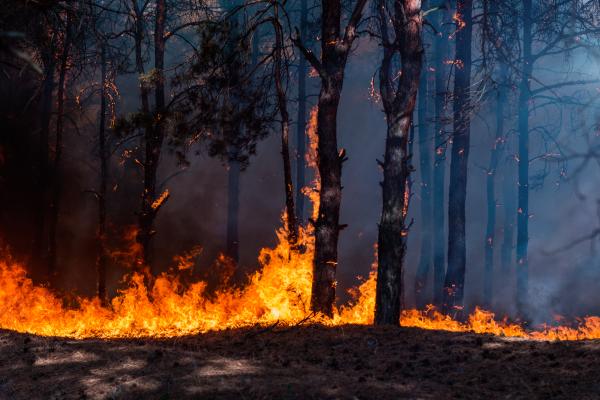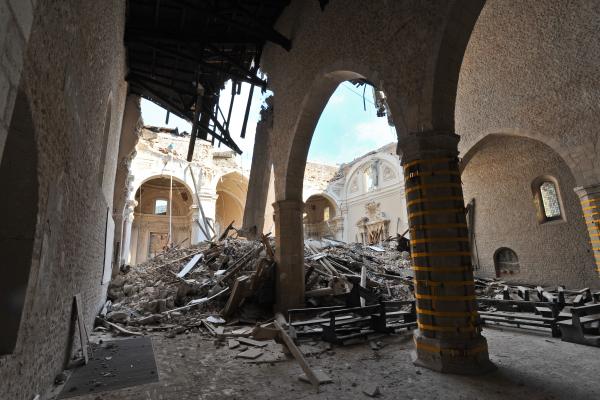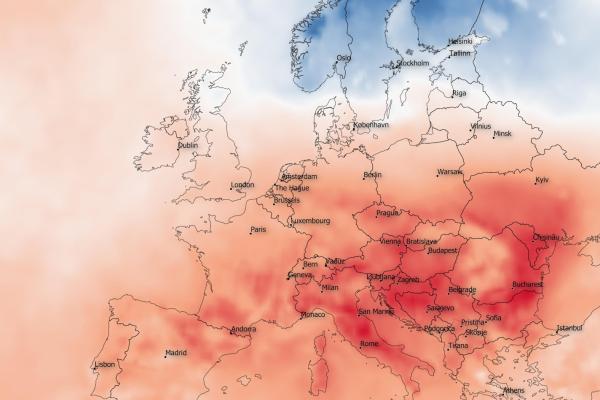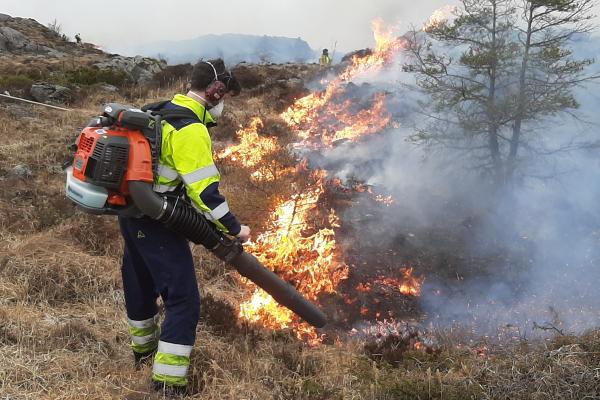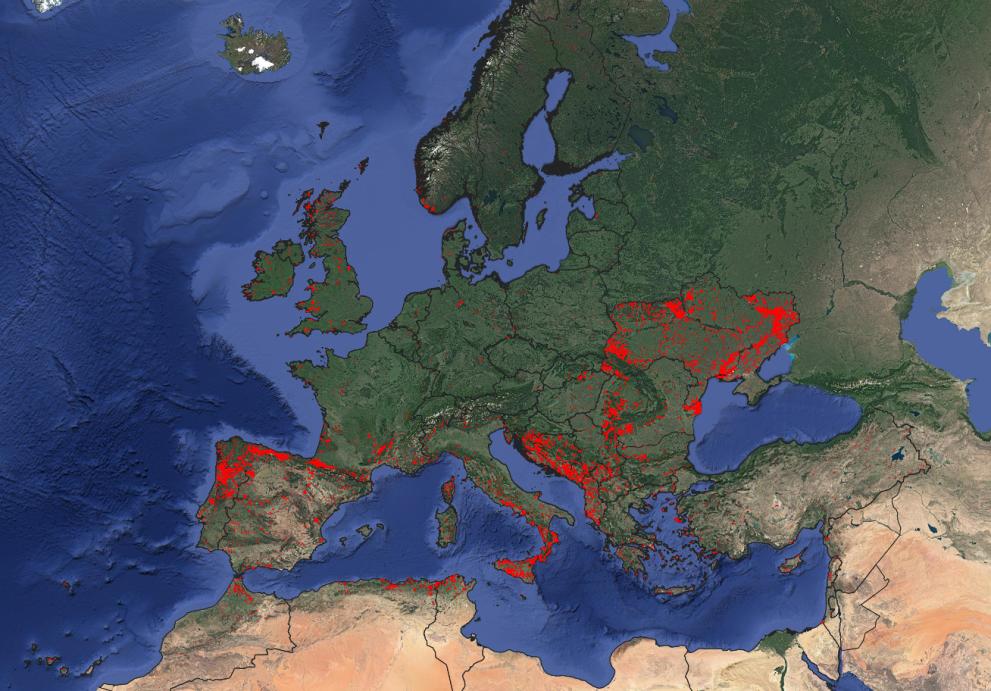
2022 was the second-worst wildfire season in the European Union since 2000 when the Copernicus’ European Forest Fire Information System (EFFIS) records began. Damages in 2022 exceeded those of 2021 and are only surpassed by those of 2017, according to data from the EFFIS Advance Report on Forest Fires in Europe, Middle East and North Africa 2022, which offers a preliminary assessment of last year’s wildfires.
EFFIS observed fires in 45 countries in 2022. These countries suffered 16 941 fires that burnt 1 624 381 hectares (ha), which is about the size of Montenegro. When due to methodological differences the Ukraine totals are excluded, records show a 4% increase in burnt area and a 48% one in the number of fires between 2021 and 2022. If only data from the EU (except Luxemburg) is considered, the increase in burnt area is more significant, reaching 86 %.
Excluding war-torn Ukraine, Spain was the most affected by wildfires with a total of 315 705 ha. This is three-and-a-half more than in 2021.
Romania (16 2518 ha), Portugal (11 2063 ha), Bosnia and Herzegovina (76 473 ha) and France (74 654 ha) were also among the five countries that were most affected.
Protected areas were heavily under fire
Fires see no borders nor protected areas and in 2022, Natura 2000 sites were hit hard.
The total burnt surface in these protected areas in 2022 reached 365 308 ha, the highest amount mapped in the last ten years. The damage was particularly concentrated in three countries: Spain, Romania and Portugal. Together, they accounted for over 75% of the total area burnt in protected areas.
The analysis of the damage fires caused in the Natura 2000 network is of particular concern as they include the habitats of special interest and are home to endangered plant and animal species.
Wildfires in the EU in 2022
Looking just at the EU, in 2022, fires were mapped in 26 of the EU27 countries (all except Luxembourg), burning 837 212 ha in total. This represents 86% more than the 449 342 ha recorded in 2021.
July was the month when the most significant proportion of the damage occurred, particularly in Spain (+140,000 ha burnt), Portugal (+45,000 ha) France (+25,000 ha), Italy (+20,000 ha) and Greece (+17,000 ha). Of this total, +350,000 hectares, 44% of the total, occurred on Natura 2000 sites.
When comparing EU countries, Slovenia, Switzerland, Germany, Hungary and Slovakia had, respectively, the highest increases in burnt area compared to 2021. On the other hand, Finland, Greece and Sweden saw a decrease in this regard in 2022 compared to 2021.
An outlook on the 2023 fire season
The EFFIS portal provides updated and regular information on the evolution of wildfires and it already shows worrying numbers on the 2023 fire season, which are to some extent connected to the drought in Europe.
Although Spain and Portugal have the largest burnt area so far, France is already surpassing its annual average, registering 21331 burnt hectares in 2023 compared to the average 13 153 ha. In terms of the number of fires, Spain and France both hold records above the average.
Background
The Joint Research Centre provides a pivotal contribution to wildfire disaster risk reduction in Europe and globally through the development and operation of the European Forest Fire Information System (EFFIS) as part of the Copernicus Emergency Management Service (CEMS). Under the EU Copernicus program and the Expert Group on Forest Fires (EGFF), EFFIS provides continuous monitoring from satellites of the fire situation in Europe and the Mediterranean area supporting civil protection operations in the framework of the EU Civil Protection Mechanism (UCPM).
The current JRC Advance EFFIS Report on Forest Fires in Europe, Middle East and North Africa 2022 is a preliminary report on the 2022 fire campaign. A comprehensive study is done periodically at the end of each fire season. As in previous years, the JRC will publish the full “Forest Fires in Europe, Middle East and North Africa 2022” analysis in autumn this year, including the reports from the countries in the region analysed.
In order to enhance its ability to respond to wildfires in 2023 and beyond, the European Commission is prepared to assist Member States and neighbouring countries through the EU Civil Protection Mechanism (UCPM). Meanwhile, the JRC remains vigilant in monitoring wildfires and issuing timely warnings about potential wildfire hazards.
Details
- Publication date
- 2 May 2023
- Author
- Joint Research Centre
- JRC portfolios

